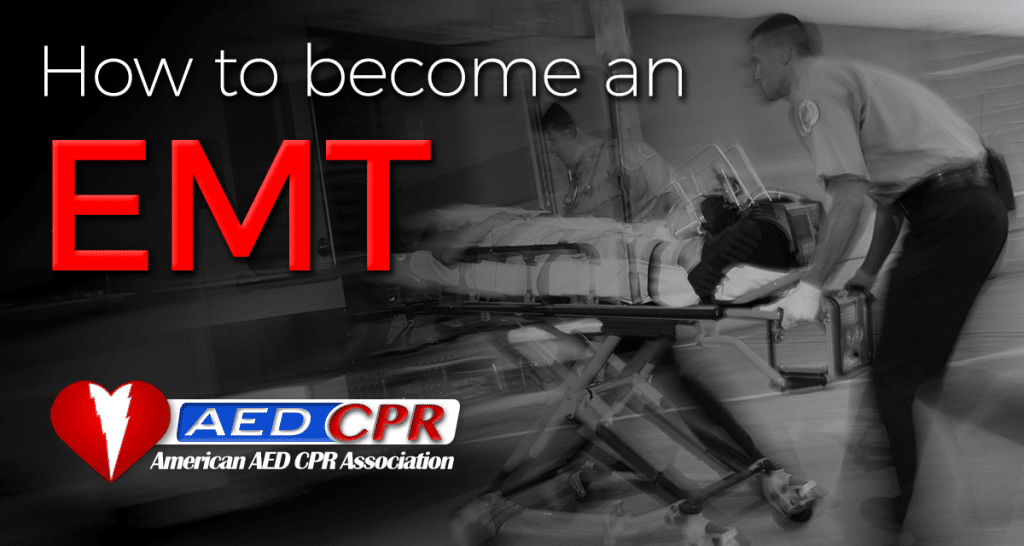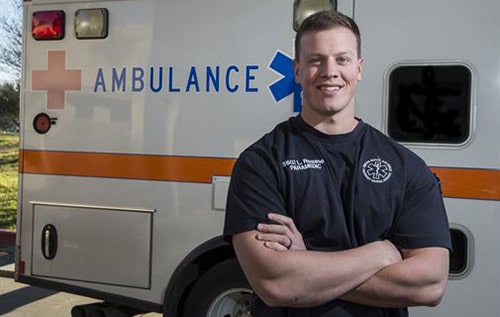
Being an EMT or Emergency Medical Technician can be a rewarding and exciting profession. Becoming an EMT is simple, typical training programs take about 16 weeks.
If you’re working towards a career in the medical field, you may have considered becoming an EMT. After all, being an EMT can look good on your resume as well as provide you with practical, hands-on experience. You can decide whether or not becoming an EMT is right for you.
Introduction to the EMT Profession
An EMT, or emergency medical technician is a certified healthcare professional that provides people with basic medical aid in the field. For instance, an EMT will be trained to stop external bleeding, manage respiratory emergencies, and perform CPR among other things. While most EMTs work for ambulance services, they also work for fire departments and hospitals.
What is an EMT?
As an EMT, you will be among the first on the scene of a medical emergency. As a result, EMTs will often work in concert with the fire department or law enforcement in order to respond to the situation quickly and appropriately. You will be able to provide quick, basic medical assistance to people in need before they are turned over to a hospital for more complete care.
Different types of EMTs
Becoming an EMT requires that you become EMT certified. There are several different levels of EMT certification, each with varying levels of experience and skills. EMT certification levels vary by state. They are generally divided into three certification levels:
EMT-Basic (EMT-B or EMT in some states) is the standard certification level. As a result, EMT-Bs have fewer training hours and responsibilities than those with more advanced training. EMT-Bs perform lifesaving procedures such as CPR, automatic external defibrillation (AED), and splinting of broken bones among other procedures. However, EMT-Bs cannot perform some invasive procedures; EMTs with more advanced training certifications will handle them.
EMT-Intermediate (EMT-I, AEMT, or EMT-A in some states) is a higher level of certification than EMT-Basic. EMT-Is have more training hours and an expanded list of duties compared to EMT-Bs. In addition to the tasks that EMT-Bs perform, EMT-Is can intubate patients and insert IVs. In some states, EMT-Is can also administer non-prescribed drugs to patients.
If you choose to, you can get certified as an EMT-Paramedic (commonly referred to as paramedic) it is the highest level of EMT certification. As such, paramedics have more training hours and responsibilities than basic or intermediate EMTs. Paramedics have additional duties compared to intermediate EMTs: performing manual defibrillation, administering drugs (orally or intravenously), reading lab results, X-rays and EKGs, and cleaning wounds.
Many paramedic certification programs require a certain number of hours of work as an EMT. Therefore, if you want to pursue a career as a paramedic, it would be best to start with an EMT-Basic certification.
Responsibilities of Nationally Certified EMT Personnel
Licensed EMTs are required to act and provide aid while on duty. As outlined above, the specific procedures performed by an EMT will vary based on the level of certification as well as the state where licensed. However, it’s important to note that in most states, there is no duty-to-act for an EMT who is off duty.
Check with your employer or local district to be sure. Some municipalities will require EMTs to render aid while off duty within the municipality. If you do decide to render aid while off duty, you must continue until someone trained at your level or higher takes over or assistance is no longer needed.
What do you need to become an EMT?
If you’re interested in getting EMT certified, there are a few requirements you will need to be aware of. First of all, you need to be 18 years old or older and have either a high school diploma or a GED. You will also need certification in CPR. In addition, in order to be able to apply for EMT certification, you will need to take a state-approved training course that meets the standards of the National Registry of Emergency Medical Technicians (NREMT).
If you meet those requirements, you can apply to take the cognitive and psychomotor skill exam provided by the NREMT. This exam will assess your ability to provide entry-level emergency medical care. It is worth noting that you need to apply for these exams within two years of completing your training. If you have completed a training course more than two years ago and you aren’t nationally certified as an EMT, you will have to take the course again.
What’s the Fastest Way to Become an EMT?
EMT Basic Training
If you’re looking to become a certified EMT quickly to get your EMT license, there are a few things you should know. First of all, you can’t skip training hours. You’ll need about 154 hours
EMT Courses
The best way to find a course is to visit your local EMS or Fire Department and ask how to get your EMT certification. They may also have information on local job openings and continuing education.
For EMTs in training, courses are usually around 150 hours long over a period of months. Many colleges offer classes to become an EMT that take a full semester. However, sometimes colleges will offer “condensed” versions of these courses, taken over a half or quarter semester.
These condensed courses still take the same number of hours. They are just taken over a shorter period of time.
For those looking for more flexibility in their training, some schools offer online EMT classes. You can take the classroom portion of an EMT course online. This includes lectures, quizzes, and exams. While the classroom portion of the course can be completed online, you will still need to receive hands-on professional training in person.
Hands-on training will prepare you for work in the field as an EMT. Clinical hands-on training may include real medical emergencies and is the best way to become an experienced EMT.
To summarize, the fastest way to become an EMT is to:
- Take a condensed EMT training course through a local college, fire department or another nationally recognized service.
- Earn your CPR certification online.
- Take the cognitive and psychomotor exam by the NREMT.
It’s important to note that while the condensed courses are “shorter” that doesn’t make them easier. In fact, it’s most likely the opposite; expect weeks of long study hours and long classes.
CPR Certifications
Like many medical professionals, EMTs need to have CPR certification. This certification is usually separate from the EMT training course, although EMT courses will cover CPR training. Because of this, it can help to be CPR certified before taking an EMT training course.
You can earn your CPR certification in person or online. Earning your certification online is generally faster than a traditional course.
What can I do with EMT training?
Many people undergo EMT training for a wide variety of careers. Emergency medical services, first responders, ambulance technicians, police, S.W.A.T, firefighters, and coast guard all use skills learned as an EMT. In addition, an EMT certification is also valuable to many people who want a medical career; the experience is very useful for anyone wanting to be a doctor or nurse, and it looks good on a pre-med student’s resume.
Other considerations
Becoming an EMT is not for everyone. Working as an EMT can be traumatic. You may experience gruesome injuries, victims in excruciating pain, and death. EMTs suffering from PTSD
You must be able to pass a criminal background check and drug test. Depending on the results you may be barred from registering from the course or taking the exam. You may have to provide medical and immunization records when registering.

Frequently Asked Questions
The EMT Basic course is generally about 16 weeks in length. The required clinical work may take longer to complete. You should plan on the entire process taking
about 6 months.
Yes, you will need to renew your certification. Most certifications are valid for 2 years. Your initial national certification may be valid for up to 3 years depending on the date of completion.
To renew your certification you have the option of taking a cognitive exam or approximately 40 hours of continuing education. You may only make 1 attempt to pass the cognitive exam.
You can apply for an EMT certification program as soon as you finish high school or receive your GED. To get your EMT certification, you must be at least 18 years of age. You can take just the EMT certification class at a local college. In addition, many colleges offer an Emergency Medical Services Associate in Science degree.
To obtain EMT-B certification, you must be at least 18 years of age. All applicants must pass a criminal background check. Completion of a state-approved EMT-B or I/85 course within the last 2 years. Successful psychomotor exam completion. Applicants must pass the National Registry of Emergency Medical Technicians (NREMT) cognitive exam. Also, a current Healthcare Provider BLS certification is required.
To become an EMT Paramedic, you must possess a current EMT-B or higher certification. Applicants must complete a state-approved EMT Paramedic course, psychomotor exam, and NREMT cognitive exam.
